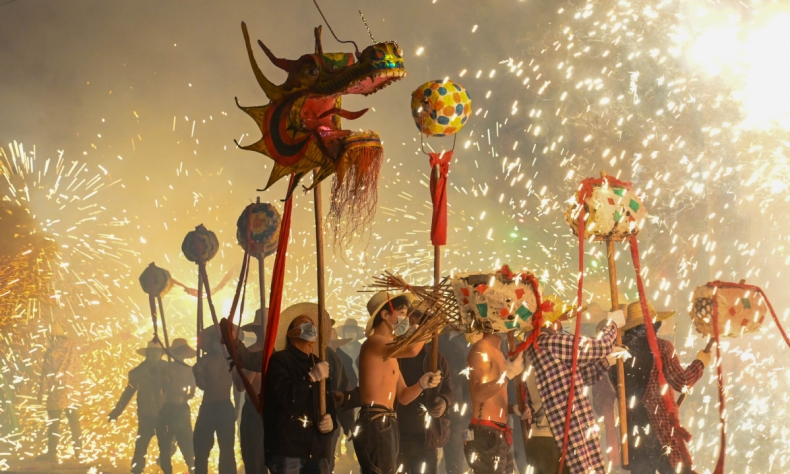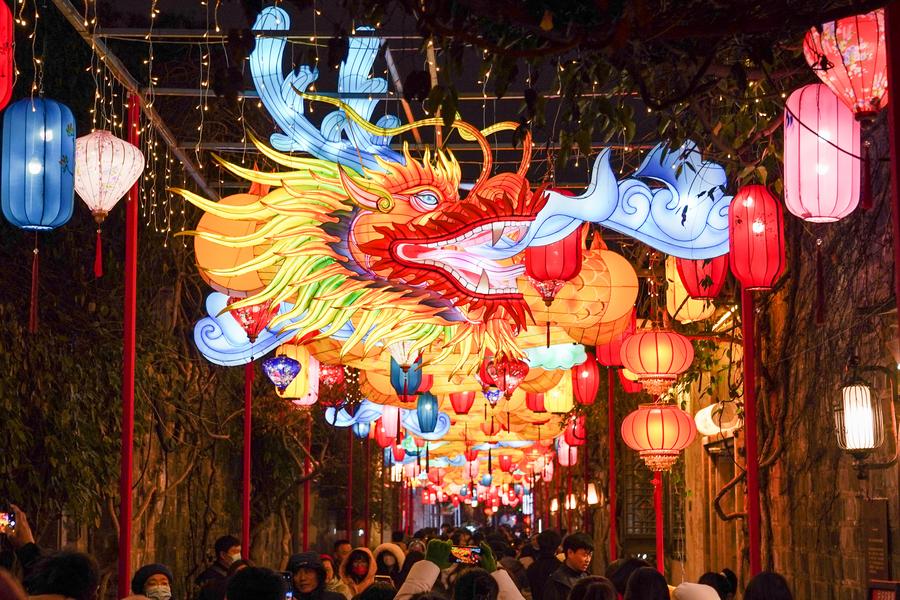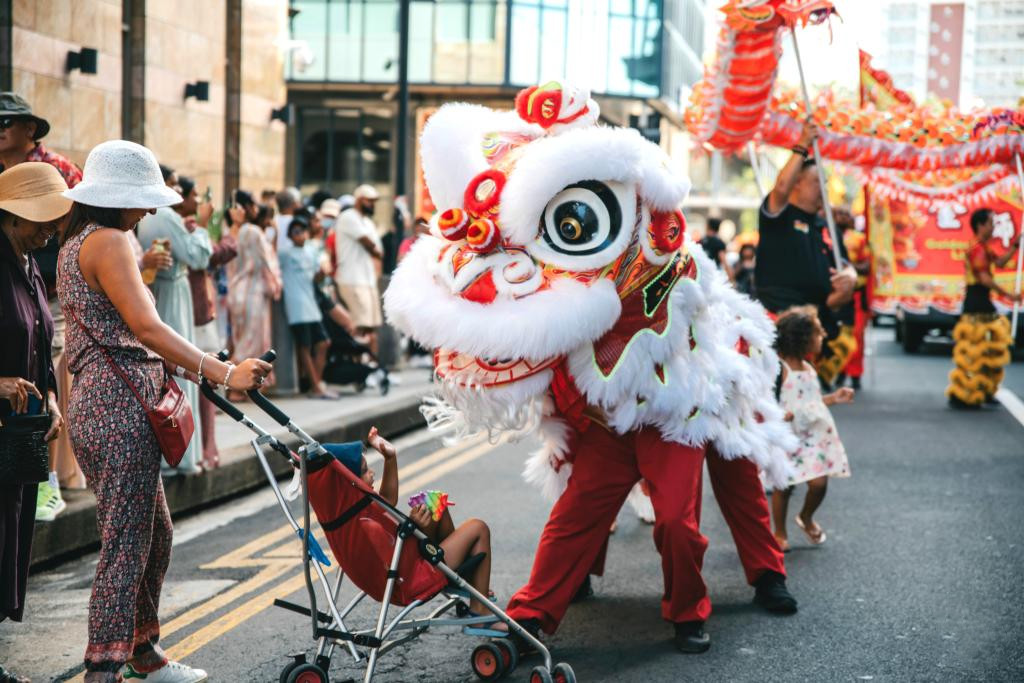The Roots and Fruits of Chinese Spring Festival

The Chinese New Year – the most important holiday in the country – offers a window into China’s past and present.
Traditional festivals forge a nation’s cultural identity and solidarity. Through opulent customs and celebratory activities, they convey the collective psyche, emotions, and aspirations of a nation. As a key part of Chinese culture, traditional Chinese festivals reinforce the bond among Chinese people and preserve our cultural roots. Of all Chinese festivals, the Spring Festival is the most important, both culturally and historically.
Values and wishes
Spring Festival customs are imbued with traditional Chinese values, such as filiality and patriotism. During this period of the year, people offer sacrifices to the earth, heavens, and deities, and pray for good weather, peace for their homeland, and good fortune for their families. They also express their love and gratitude to their ancestors through ancestral worship, revisit the moral teachings of past generations, and maintain family traditions.
The central themes expressed during the Spring Festival are unity, love, and harmony. Its customs, such as the whole family dining together, exchanging visits with relatives and friends, and handing out cash in red envelopes to children, all help foster a strong sense of family belonging and closer family ties. Chinese people return to their hometowns to unite with family during the Spring Festival no matter how far away they might be. This is why China sees the world’s largest human migration, known as the Spring Festival travel rush, every year. The Chinese New Year visits and cordial greetings exchanged between relatives, friends, and neighbors, increase social harmony by strengthening the bond beyond one’s immediate family. During these visits and also at family gatherings, adults often give children cash-stuffed red envelopes, which are believed to protect the receivers from all evil spirits in the coming year. This practice again illustrates the value Chinese people place on family and their young children.
All elements of the Spring Festival convey good wishes. To celebrate the holiday, people decorate their homes with red couplets, diamond-shaped posters of the Chinese character for happiness (fu) and New Year paintings, all meant to bring in good fortune. At family reunion dinners, dumplings called jiaozi (in north China) or glutinous rice balls in soup called tangyuan (in south China), and glutinous rice cakes called niangao are the must, because jiaozi resembles the gold ingot used as currency in ancient times, tangyuan (tang means soup, yuan means round or ball) is homophonous with “union,” and niangao (nian means year and gao sounds like the character which means better or higher) indicates a better year ahead.
Mythical dragon
The Chinese Zodiac is a 12-year cycle of which each year has a corresponding animal that symbolizes it. This year is the Year of the Dragon, a mythical creature equipped with magical power to command wind and rain. It has been revered as the totem of the Chinese civilization for millennia and worship of it can be dated back to the Neolithic Age 8,000 years ago. We Chinese people hence call ourselves descendants of the dragon. As the image of this magical, mighty animal was exclusively associated with the monarch and his control over the state in ancient times, the dragon represents power and nobility in Chinese culture. Its divine nature also gives it the metaphorical sense of being extraordinary, for example, a person who is exceptionally talented, virtuous or successful is often compared to a dragon. As the dragon is the god of rain, which is critical for good harvest, it is regarded as a sign of beneficence, happiness, and good fortune. The past several years of the dragon include 2012, 2000, 1988, 1976, 1964, 1952, and 1940.

Spring Festival celebrated globally
As cultures around the world are becoming increasingly intermingled and cultural customs of China are more accepted by other countries, the Spring Festival is being celebrated by people in more parts of the world. It is now a statutory holiday in two dozen countries and regions, and marked by messages from many heads of state and leaders of international organizations. Its celebration has gone beyond the Asian countries that have been heavily influenced by traditional Chinese culture to reach Europe and America.
In the U.K., for instance, Spring Festival celebrations have become a mainstream cultural event. During the holiday, some local governments, Chinese communities in the country, and cultural agencies of China often jointly host a massive variety of activities. Last year such festivities were held in-person for the first time since the outbreak of the COVID-19 pandemic, and covered a large swath of the country centered on London, including Birmingham, Bristol, Cardiff, Edinburgh, Manchester and even Bailiwick of Jersey. On January 22, 2023, the London Chinatown Chinese Association (LCCA) kicked off the 22nd Spring Festival gala at the Trafalgar Square in central London. With a record number of 700,000 participants, the event initiated in 2002 has evolved into the largest Spring Festival celebration out of Asia and one of the most important occasions marking cultural diversity in the U.K.
The Science Museum in London hosted the “China Lates” program for the Spring Festival in 2019, and resumed offline activities for the holiday on January 25, 2023. It introduced visitors to VR views of China’s space station, artifacts about China’s zodiac animals, stories of Nian, a man-eating beast at the center of the origin of the Spring Festival, lion dance, and other traditional art performances.
Before the Spring Festival, many cities in France also hang up colorful banners and red lanterns. On January 21-22, 2023, Chinese groups including Amicale des Teochew en France teamed up with authorities of Paris Centre and the 13th Arrondissement to host festive activities for the Chinese New Year, the first in-person celebrations since 2020 when the pandemic emerged. They fired up the city, and more than 100,000 people flooded the Place de la République and the streets along the parade routes, exchanging greetings in Chinese and French with everyone and sharing fun and joy in experiencing Chinese culture.
In Spain, the 2023 Spring Festival was also celebrated in cities such as Madrid, Barcelona, and Zaragoza with temple fairs, food shows, parades, and art exhibitions. Local Chinese communities spent the holiday together with other residents.
Similar activities can be found in other parts of the world as well. Many political leaders deliver New Year’s messages to their citizens of Chinese descent, Chinese people studying, working or traveling in their countries, and the Chinese in China, giving their best wishes and expressing the desire for further cooperation in the coming year.

Growing soft power
On December 22, 2023, the 78th United Nations General Assembly unanimously passed a resolution officially designating the Lunar New Year, or Spring Festival, as a UN floating holiday. This move marks further recognition of the cultural significance of the traditional Chinese festival, the core concepts of Chinese civilization which it conveys, including peace, amity, and harmony, as well as the values shared by all humanity that it promotes like loving family, inclusive society, and harmonious co-existence between mankind and nature. Listing the Spring Festival as a UN holiday is an act in line with the Global Civilization Initiative and shows respect for the diversity of global civilizations.
This move also indicates China’s increasing power, both hard and soft. Reform and opening-up over the past decades has galvanized its economic growth, resulting in tremendous progress in all aspects of the country. China is now the world’s second largest economy and top trader in goods, serving as a major engine of global economic growth. Data from the World Bank showed that during the 2013-2021 period, China’s contribution to global economic growth averaged 38.6 percent, higher than that of the Group of Seven countries combined. According to the International Monetary Fund, China accounted for 18.8 percent of the global economy in 2023 and may approach 20 percent in 2024, compared with a mere 1.7 percent in 1980.
In tandem with gains in its economic strength, China has built up its international standing and soft power. U.K.-based Brand Finance ranked China at the fifth spot in Global Soft Power Index 2023. This is corroborated by the facts that interest in the Chinese language, culture, and arts is growing worldwide, the international presence and prominence of Chinese intellectuals is increasing, and more Chinese propositions and solutions are provided for improving global governance. As China is moving closer to the center stage of the world, more and more countries are eager to learn more about it, and the culture around the Chinese New Year – the most important holiday in the country – offers a window into China’s past and present.
Dr. Li Gang is an associate researcher and Oujiang Distinguished Professor at Wenzhou University.
 Facebook
Facebook
 Twitter
Twitter
 Linkedin
Linkedin
 Google +
Google +










